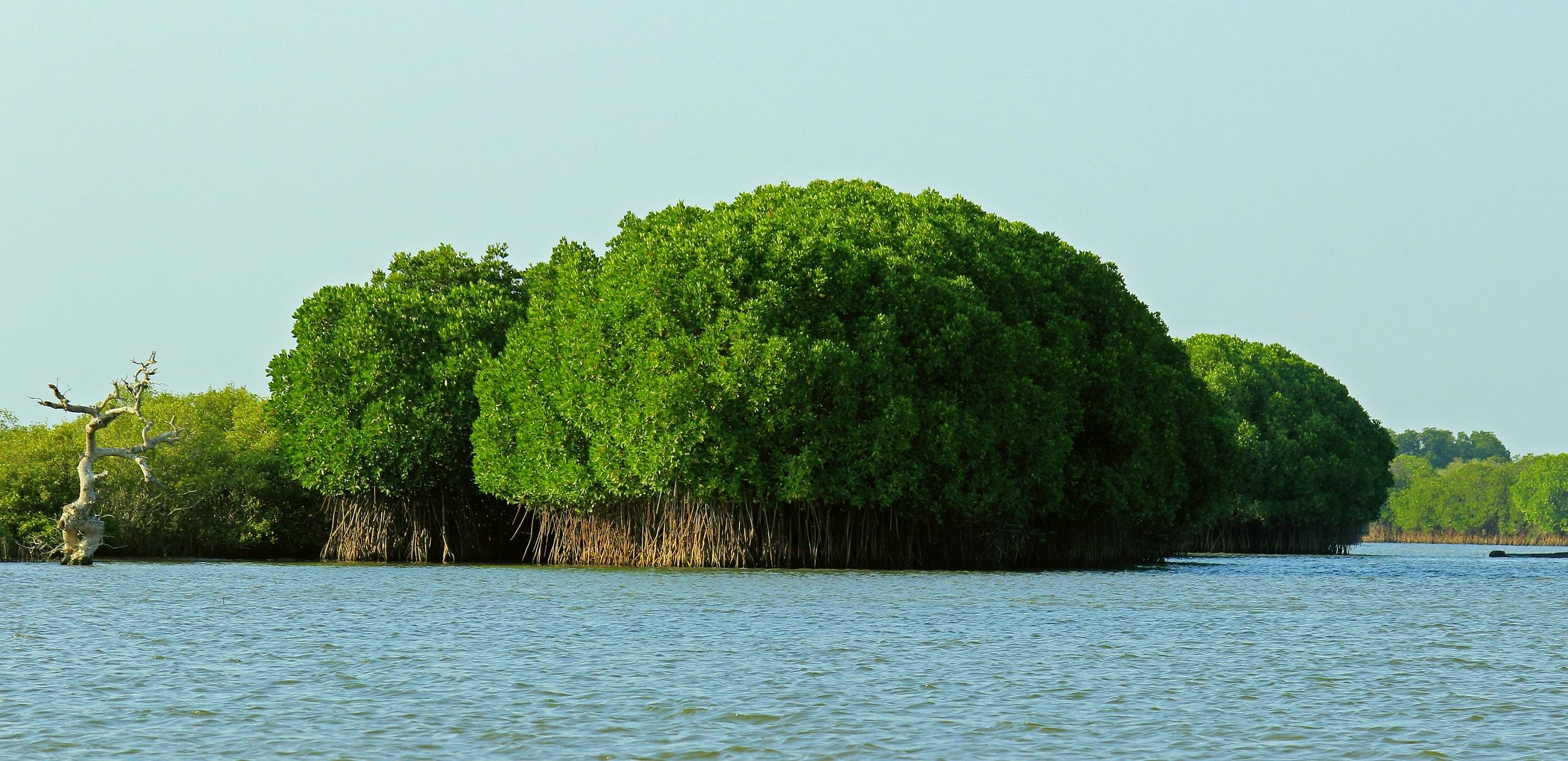
Tropical dry evergreen forests and the mangroves on the east coast of peninsular India have remained more accessible to humans as compared to wet evergreen forests and the mangroves on the west coast.
Climate-related catastrophes like cyclone and tsunami are hitting the east coast more frequently and bringing misery to the people. Regions all along the coast, from the Sundarbans to Kanyakumari, have steadily been losing natural dry evergreen forests as well as mangrove vegetation.
Communities are increasingly resorting to shrimp culture, fruit orchards, plantation crops, salt pans, etc. Even village cattle swim across creeks and graze in mangrove vegetations, especially Avicennia marina. Further, Avicennia officinalis are also found to be degrading because of high salinity. Local communities are also dependent on mangrove forests for firewood.
Thrive in hostile conditions
As part of Management Effectiveness Evaluation team for studying some sanctuaries and national parks in Tamil Nadu, I along with Dr P S Easa, former director of the Kerala Forest Research Institute, visited Pichavaram mangroves in the Cauvery delta, nearly 200 km south of Chennai.
Mangrove plants grow in hostile environmental conditions like high salinity, oxygen-deficient water-logged soil strata, tidal pressure, strong winds and sea waves and exhibit evolved morphological and physiological adaptations.
The mangrove species towards the waterfront are Rhizophora apiculata, Rhizophora mucronata, Avicennia and Sonneratia. Above these the luxuriant group of Bruguiera gymnorrhiza, Lumnitzera racemosa and Aegiceras corniculatum occur. These species form knee roots.
Towards the land, Excoecaria agallocha, Heritiera littoralis and Xylocarnus spp occur. They generally produce buttresses.
Once mangroves grow, submersed banks are fully stabilised and plants reach climax vegetation, which comprises terrestrial and aquatic animals and microorganisms. If sediments do not stabilise, submersed banks will be washed out. The process continues till the particular sediment is established.
Mangroves provide shelter to hundreds of fish species and productive marine life. Like all other animals, fish, shrimp, crabs and other marine life in the sea need a safe place to grow, away from predators. With their tangles and intricate root systems, mangroves are excellent nurseries, providing a safe hiding place for young animals. Mangroves are habitats to shorebirds, reptiles, insects and mammals like monkeys, rats, etc. The animals utilise the mangroves to roost, breed and take shelter from strong winds and heat.
During our visit to Pichavaram mangroves, we interacted with the communities and also visited some villages facing tsunami and cyclone regularly. We also happened to see the remnants of Chinnavaikkal village right on the seashore. Prior to December 26, 2004, this was a village of nearly 50 families with a total population of around 200. The village faced the brunt of the 2004 tsunami when 30 people from this village were washed away. We were also told that nearly 30 to 40 people were saved, as they could swim and reach the mangrove trees.
Further, tsunami waves in the villages surrounded by mangrove trees were less intense as compared to villages facing the open sea. Human causalities in the villages of Cuddalore and Nagapattinam districts of Tamil Nadu were unprecedented. The Pichavaram mangrove is in Cuddalore district and is much better compared to the mangrove forests in Nagapattinam district.
Having realised the importance of mangroves, the Tamil Nadu Forest Department has begun protecting mangrove patches on the delta region of the seashore and is planting mangrove species on degraded lands, where plants are damaged by illicit felling for firewood and livestock grazing.
Land use pattern
The planting of trees on the coast in West Bengal, Odisha, Andhra Pradesh and Tamil Nadu under the shelterwood method has been an important programme of these state governments. However, vast stretches of coastal lands are in private ownership. Often, JCBs and bulldozers work in the area and attempts are made to change the land use pattern with no scope for planting trees.
The Union Ministry of Environment and Forests & Climate Change has notified the Coastal Regulation Zone (CRZ). Irrespective of land use pattern, planting a few trees on private lands can be made mandatory. Areas used for shrimp culture can have mangrove species on the periphery.
Historically, the east coast is dotted with dry evergreen forests. These forests have been practically wiped out from even government lands. The forests were the natural protection against climate-related hazards. During our visit to Villupuram district in Tamil Nadu and to Puducherry, we noticed only one in-situ conservation plot over 25 acres of land identified by the Bengaluru-based Foundation for Revitalisation of Local Health Traditions (FRLHT). This is a sacred grove belonging to Auroville in Puducherry.
Therefore, it is crucial that the scattered natural patches of dry evergreen forests that remain on the east coast be preserved and some more plantations of these species regularly grown.
India’s west coast, meanwhile, comprises more steep areas and is generally covered by naturally occurring wet evergreen species. The leaf area index of these trees is also high and plays a better role of ‘biotic pump’ in sucking atmospheric moisture and its transport across the peninsula.
Given that the recent floods, landslides, landslips, soil piping and other extreme weather events in Kerala and Kodagu district of Karnataka are indicators of change in the land use pattern, it is imperative that the west coast, too, puts in place measures to preserve its forests and mangroves and develop them further.
(The writer is former Principal Chief Conservator of Forests, Karnataka)